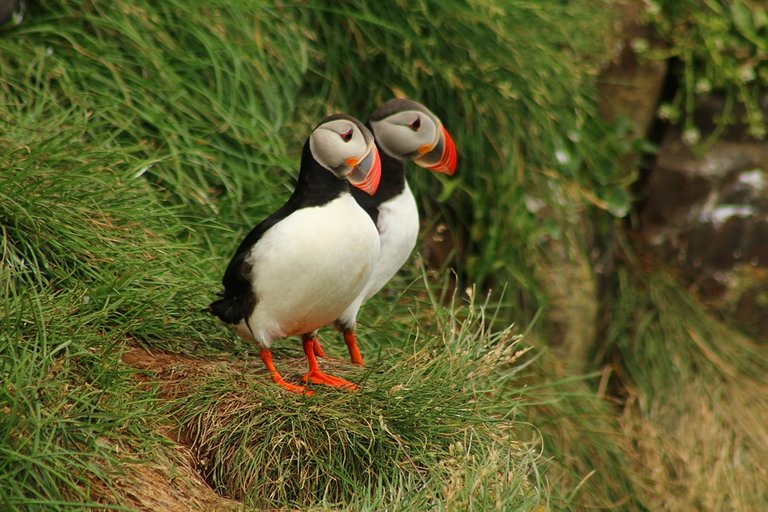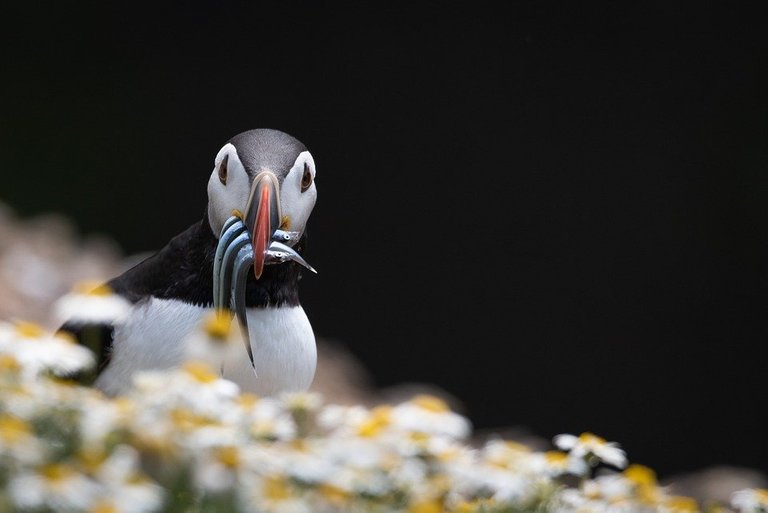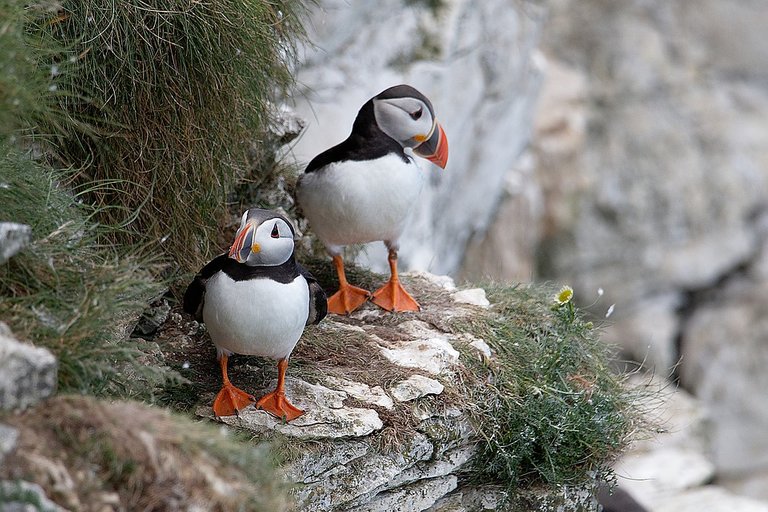
Picture Credit:
naturfreund_pics (Source: Pixabay)
Puffin pairs that follow similar migration routes breed a lot of with success the subsequent season, a replacement university study has found. Many lasting birds, love swans, albatrosses or so, puffins, are renowned for his or her lasting monandrous, 'soulmate' pairings. Scientists have long understood that in these species, fruitful performance is influenced by try bond strength and longevity, with long-established pairs typically higher at rearing offspring. However, in species like puffins that got to migrate to distant wintering grounds throughout the non-breeding season, little is understood regarding however mates maintain their pair-bond and behave.
Do they confine contact to take care of their relationship? Or do they are going their own approach and abandon their mate till the subsequent spring? The new study that options within the Gregorian calendar month seventh 2017 edition of Marine Ecology Progress Series, centered on whether or not seabird pairs stayed in grips throughout the winter months or instead headed off and migrated severally, prioritizing their individual health and upbeat, and whether this had any effect on the pairs' subsequent breeding success.

Picture Credit: ebor (Source: Pixabay)
Over the course of six years, the team from Oxford's Department of Zoology, together with the London Institute of biological science, used miniature trailing devices referred to as geolocators to trace the migratory movements and behavior of twelve pairs of Atlantic Puffins, breeding on Skomer Island, Pembrokeshire.
While try members migrated on an individual basis, their routes were notably similar throughout the primary a part of the winter. Partners would then follow separate methods at the later finish of the season, however synchronous their timings of coming to the colony in spring. A key finding of the study is that pairs that followed a lot of similar migration routes bred earlier and more with success the subsequent spring, showing that there's a transparent profit for puffins to migrate near to their mates. This proximity could build it easier for pairs to synchronize their come to the colony in spring.

Picture Credit: MustangJoe (Source: Pixabay)
The findings also reveal that while migrating close to its partner is key to a puffin's reproductive success, there are different factors at play. Feminine puffins were found to forage quite males, proving essential to their breeding success the subsequent season. Feminine puffins that foraged a lot of over winter were ready to lay eggs earlier and rear pufflings more with success, presumably as a result of they were in an exceedingly higher pre-breeding condition.
Dr. Annette Fayet, a Junior Research Fellow of Queen's College, Oxford and of the Department of Biological Science at University, who is the lead author of the study, said: 'While migrating close to one's partner leads to more successful breeding in puffins, feminine winter hunting effort looks to be even a lot of essential to make sure high fruitful success. A probable clarification for this finding is that feminine puffin that pays longer fuelling up over winter comes to the colony in higher condition and are ready to lay higher quality eggs, rearing stronger chicks. In general, it appears to be that organizing singular condition is more significant for seabirds' reproducing accomplishment than keeping in touch with their accomplice outside of the rearing season. However, following comparable relocation courses to at least, each other may encourage synchronization comes back to the rearing settlement, that is perceived to be fundamental for endeavor security and breeding success in numerous transient birds.'

Picture Credit:
de_zigeuner (Source: Pixabay)
Moving forward the group plans to expand on the discoveries and ongoing innovative turns of events, examination the developments and conduct of seabirds once they're at sea. Dr. Fayet stated: 'Toward the finish of the reproducing season puffins vanish adrift for more than eight months before restoring the accompanying spring, and researchers have since quite a while ago had questions about where they're going all through that time. However, up to this point following gadgets were too tremendous to even think about using on little winged animals like puffins. The late contracting of the following innovation mean we are going to directly contemplate the adrift developments of puffins and totally extraordinary little transitory seabirds distantly over months and even years.
C
omplicated analytical techniques like machine learning can even be accustomed to determine behaviors in trailing information, permitting us to grasp not solely wherever birds go, however conjointly what they are doing confounded (e.g. flying, foraging).
This will assist us with considering seabirds' adrift nature and conduct, that is by and by inadequately saw, anyway the outcomes likewise will be important for the preservation of seabirds, that are directly defenseless by sea contamination and overfishing, making them the first weak group of fowls on the earth. This incorporates puffins, that are significantly declining inside the past hardly any decades. '
References:
2. Materials provided by University of Oxford
Journal Reference:
- AL Fayet, A Shoji, R Freeman, CM Perrins, T Guilford. Within-pair similarity in migration route and female winter foraging effort predict pair breeding performance in a monogamous seabird. Marine Ecology Progress Series, 2017; 569: 243 DOI: 10.3354/meps12083
Congratulations @crazy-science! You have completed the following achievement on the Hive blockchain and have been rewarded with new badge(s) :
You can view your badges on your board and compare yourself to others in the Ranking
If you no longer want to receive notifications, reply to this comment with the word
STOPDo not miss the last post from @hivebuzz: